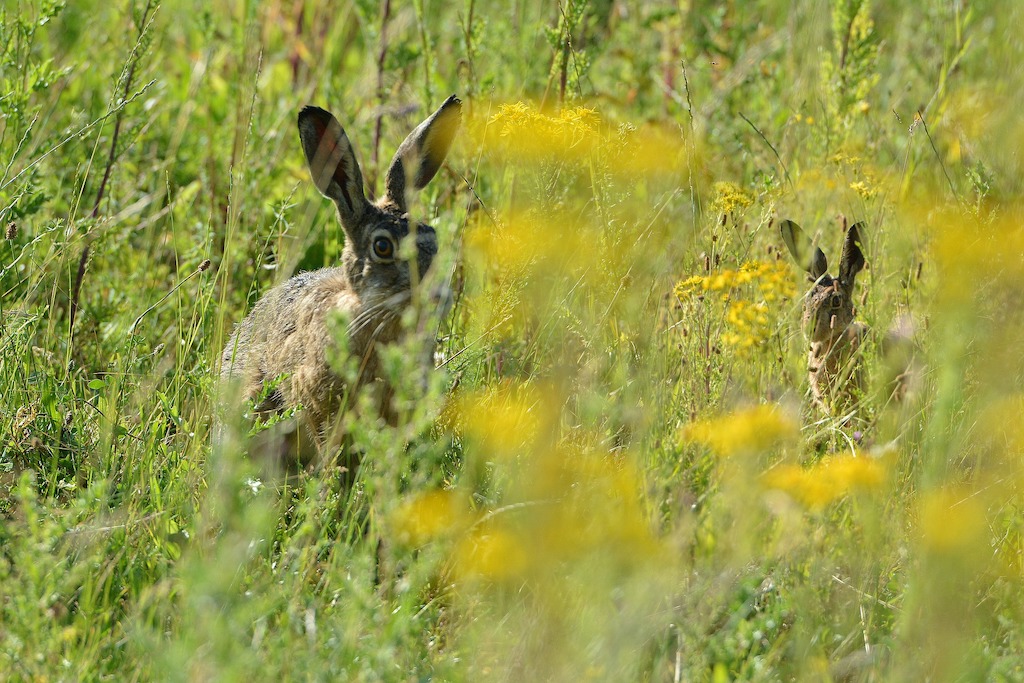Hares could be wiped out, experts warn, as a spate in mystery deaths have sparked fears that a highly infectious disease has “jumped” from rabbits.
David Wembridge, Peoples Trust for Endangered Species Survey Officer, warned that if Rabbit Haemorrhagic Disease (RHD) or Myxomatosis spreads to non-resistant hares for the first time, the animals could be virtually eradicated in a couple of years.
Myxomatosis first reached the UK in 1953 after it was introduced as a control measure in Kent, but inadvertently resulted in the deaths of 99 percent of the rabbit population only three years later.
There are now renewed fears that the potentially fatal viral disease caused by blood sucking insects is behind the mysterious surge in the recent deaths of hares in Suffolk and Norfolk.
The hares, which are larger than rabbits and have longer hind legs, are also at risk from RHD-2, a difficult to diagnose haemorrhagic disease that “got into the wild big-time in the last three years”.
Mr Wembridge said: “It is not thought that hunting has a big effect on the population, but the hare population is not so robust that it would be able to take a really big loss in numbers- the disease in rabbits nearly wiped out their population in the 1950s . Until resistance spread in rabbits it had a major impact on them.
“If a contagious disease agent has spread to hares for the first time then they will not have any resistance, and it could be that a very large proportion -over 90%- of the population will be killed as was in the case of rabbits. The rabbits were gone in a matter of a couple of years. “
It comes as a spike in reports by landowners and farmers of sightings of sick or dead hares have fuelled concerns around the future of the species in the East of England.
Many of these sightings were around Bungay, Suffolk, and on one occasion six hares were found dead in a field.
Myxomatosis is always fatal to rabbits, and its symptoms include breathing problems, bulging eyes and swelling.
Dr Diana Bell, Senior Lecturer of Biological Sciences at the University of East Anglia, said the disease has been “particularly virulent” in rabbits this autumn.
Dr Bell said: “We need to know what is happening. East Anglia is a really important stronghold for brown hares so it would be disastrous if we lost them. Hares are really up against it so getting good images of the bodies, along with their exact location, is crucial for us to rule out or identify possible diseases.
“Myxomatosis in hares is rare but earlier this year and last year there was a significant die-off in Spain. That was the first time it had happened.”
She warned that losing a large number of hares would be “disastrous” for the region, known for being a stronghold for the animals because of its large amount of arable farmland.
The People’s Trust for Endangered Species estimates there are around 817,500 left in the UK, but their numbers have continued to decline over the years.
Suffolk Wildlife Trust said the number of hares nationally have fallen by 80% over the past 100 years due to them being hunted all year round ,and also because of the threat of illegal hare coursing.
An RSPCA spokesman said: “This is a worrying report and if RHD2 or myxomatosis was the cause, then the hares would have really suffered. Both are highly infectious and fatal diseases to rabbits and hares.
“If a wild hare or rabbit is found with suspected myxomatosis or RHD if possible if should be confined and taken to the nearest vet. When confining the animal thick gloves should be worn and hands should be washed thoroughly after handling the animal.”
Anyone who sees an animal that is dead or unwell has been asked to alert the Suffolk Wildlife Trust.
Bron: Telegraph.co.uk

